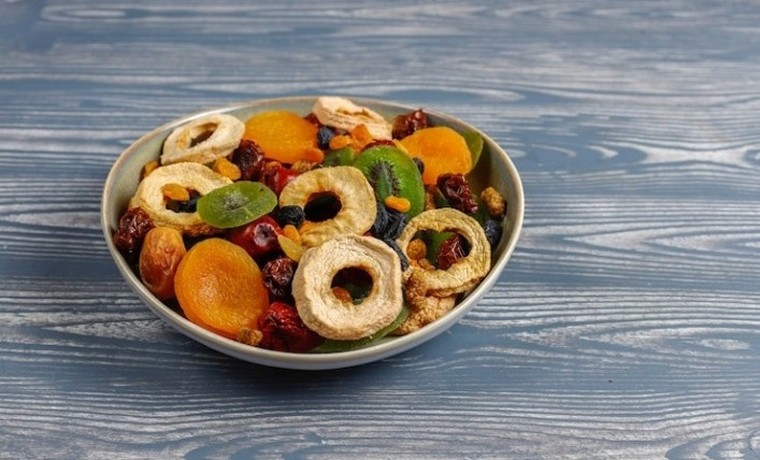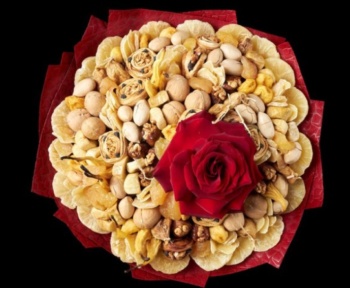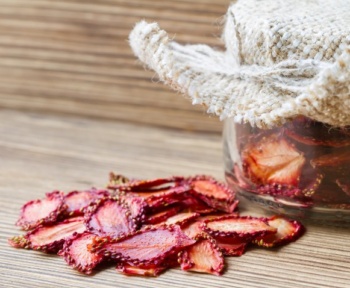Introduction
Dried fruits are like nature’s candy, aren’t they? Sweet, chewy, and packed with goodness, they’re a favorite for many. But here’s the thing—they’re also calorie-dense. That’s why it’s worth knowing exactly how many calories are in a half cup of dried fruit. It’s not just about calories; it’s about enjoying them in the right portions.
What is Dried Fruit?
In simple terms, dried fruit is a fresh fruit with all the water sucked out of it. That means what’s left is more minor, sweeter, and concentrated with nutrients. Think raisins, dates, apricots, or even dried mango—these are all classics.
Dried fruits are great because they last longer than fresh ones and are perfect for snacks, baking, or adding a punch of flavor to your meals.
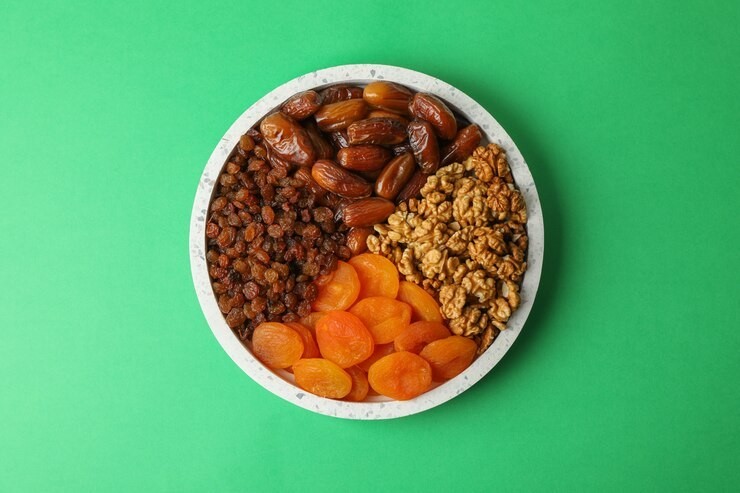
Why People Love Dried Fruits:
- They’re easy to carry around.
- They pack a lot of nutrients in small bites.
- They don’t spoil as quickly as fresh fruit.
It’s like having the best of both worlds—nutrition and convenience.
Why Should You Count Calories in Dried Fruits?
Dried fruits are tricky. They look so small and innocent but pack a serious calorie punch. For instance, a cup of grapes has about 60 calories, but a half cup of raisins? Over 200 calories. It’s easy to overdo it.
They’re also naturally high in sugar because the drying process concentrates the fruit. Even though it’s “natural“ sugar, it still adds up if you’re not paying attention.
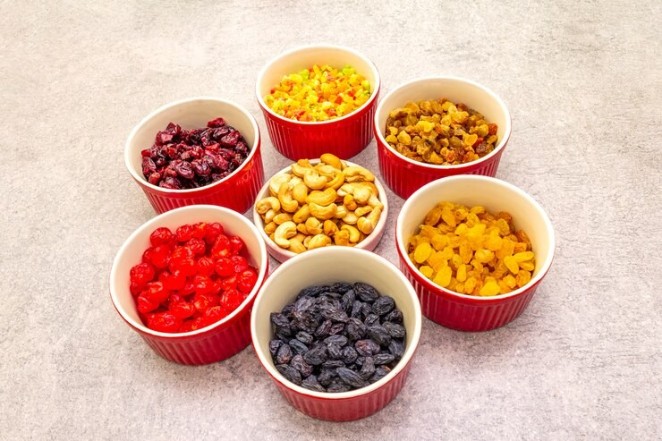
Calories in Popular Dried Fruits
Here’s a handy table to help you understand just how much is in that small handful:

It’s wild to think a few dates can add as many calories as a small meal. The key? Balance and portion control.
What Affects the Calories in Dried Fruit?
The type of fruit and how it’s processed play a significant role. Some fruits, like dates, naturally have more sugar, while others, like apples, are lighter. Then there’s the drying method. Sun-dried fruits may retain slightly different nutrients than those dried with machines.
Here’s where it gets sneaky: many store-bought options have added sugar or oils to make them taste even better (or preserve them). That’s why reading labels is a must.
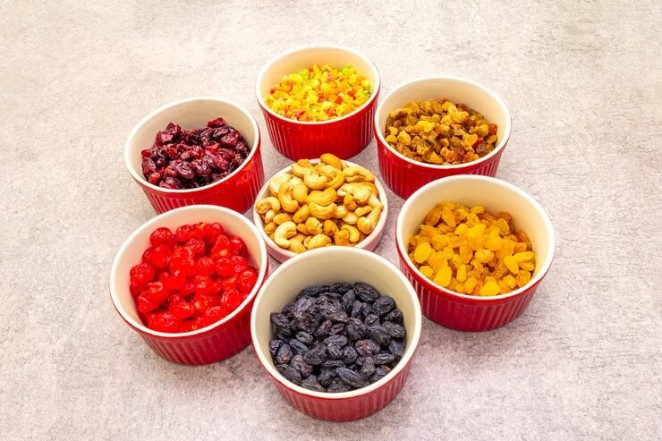
Natural vs. Sweetened Dried Fruits

When in doubt, go for the natural option. Your taste buds—and your waistline—will thank you.
How to Measure the Right Portion of Dried Fruit
You’re not alone if you’ve ever polished off a bag of dried mangoes in one sitting. They’re dangerously easy to overeat. A half cup is about the size of a small handful of your cupped palm.
For more accuracy, use a kitchen scale. Weighing 40-50 grams of dried fruit can help you stay within your calorie goals. Pre-portioned packs are another great trick to avoid going overboard.
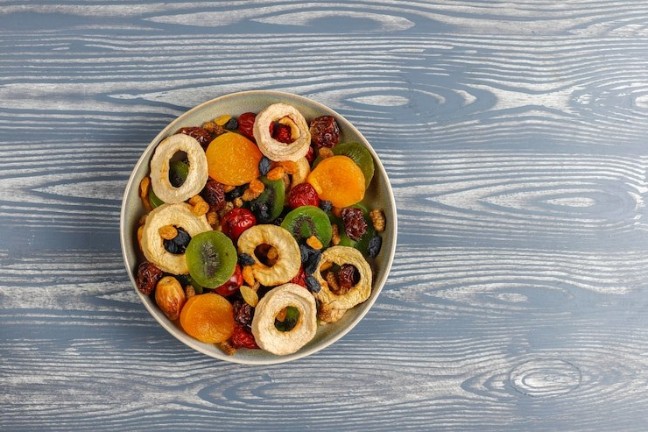
How to Pick the Healthiest Dried Fruits
Not all dried fruits are equal. Some brands sneak in sugars, preservatives, and even oils. These extras might make the fruit look shiny and taste sweeter, but they do not favor your body.
Tips for Choosing Dried Fruits:
- Look for labels that say “unsweetened“ or “no added sugar.”
- Check the ingredients list—shorter is better.
- Avoid anything with bright, unnatural colors.
Remember, dried fruits aren’t supposed to be candy. They’re tasty enough on their own.
Best Ways to Eat Dried Fruits
Dried fruits aren’t just for snacking. They can jazz up your meals, desserts, and even savory dishes.
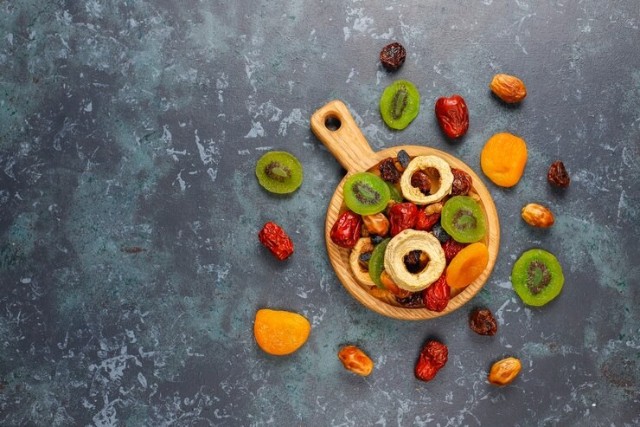
Here are some ideas to get creative:
- Mix them into your morning oatmeal.
- Add a handful to your favorite trail mix.
- Use them in baking for natural sweetness.
- Toss them into salads for a burst of flavor.
Pairing Suggestions

How Dried Fruits Fit Into Weight Loss
Can dried fruits fit into a weight-loss plan? Absolutely. Their fiber and natural sweetness can keep you full and satisfied, which helps fend off cravings for junk food.
The trick is to pair them with protein or healthy fats. A few dried apricots with almonds or a date stuffed with peanut butter is tasty and filling. Just remember, a little goes a long way.
An Expert’s Take on Dried Fruits
Nutritionist Emma Carter shared her thoughts on dried fruits:
“Dried fruits are an excellent source of nutrients, but they’re easy to overeat. Portion control is key. Enjoy them mindfully, and they can be part of a balanced diet.”
Trending Question: Are Dried Fruits Keto-Friendly?
Here’s the short answer: not really. Most dried fruits are too high in sugar for a keto diet. However, freeze-dried berries like raspberries or strawberries can work in small amounts.
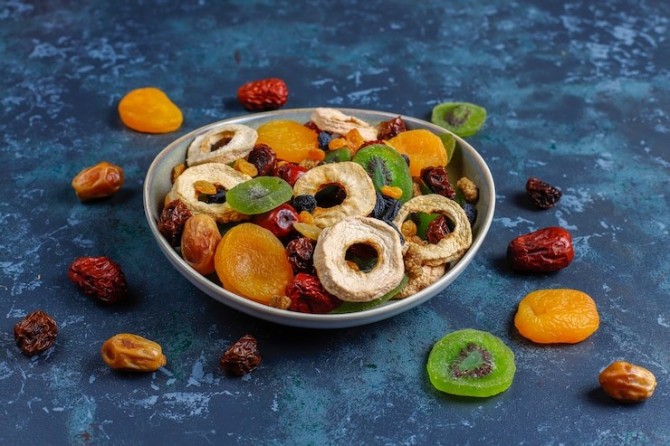
Store-Bought vs. Homemade Dried Fruits
Making your own dried fruits home can save money and help you control what goes into them. Store-bought ones are convenient but often come with added sugars or preservatives.

If you have the time, homemade is the way to go. Plus, it’s fun to experiment with different fruits.
Conclusion
Dried fruits are a fantastic snack or addition to meals, but moderation is everything. They’re nutrient-dense, naturally sweet, and versatile, but their calories can sneak up on you. Stick to smaller portions, choose unsweetened options, and enjoy them mindfully.
For more tips, recipes, and insights, check out the Dried Fruits Guide—your ultimate resource for everything dried fruit.
FAQs
Dried fruits are more calorie-dense than fresh fruits because water is removed during drying. For example, a cup of fresh grapes has about 60 calories, while a half cup of raisins (dried grapes) has over 200 calories.
Yes, in moderation. Dried fruits are rich in nutrients and fiber, keeping you full and curbing cravings. However, they are also high in natural sugars and calories, so portion control is essential for weight loss.
Dried fruits like apples, apricots, and cranberries (unsweetened) tend to have fewer calories than dates or raisins. For example, a half cup of dried apricots contains about 157 calories.
Absolutely. Unsweetened dried fruits are healthier because they don’t have added sugars or preservatives. Always check the label to ensure you’re choosing natural options.
Yes, but in small portions. Dried fruits have a high glycemic index because of their concentrated natural sugars. Diabetics should consult a healthcare professional to determine appropriate serving sizes and types of dried fruits to include in their diet.


